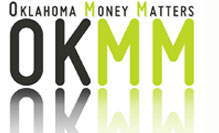How Should I Save?
Page 9 of 13
Once you’ve chosen a financial institution, you now have to navigate the many savings options offered by each company. Here are a few key features you’ll want to understand before you make your choice.
-
Liquidity. Liquidity is a key term to learn when dealing with savings accounts. Liquidity is about access - how quickly and easily can you withdraw money from your account? The easier it is to get to your money, the more liquid the account. For example, a basic savings account is accessible anytime during regular bank hours, and sometimes after hours through online banking or ATMs. This is more liquid than a money market account that charges you penalties for withdrawals and may take several days to provide cash.
-
Interest rate. The purpose of saving is to earn interest, but each type of savings account offers a different interest rate. Rates are based on two factors: liquidity and risk. The faster you can get to your money, the lower your interest rate will be. After all, we pay for convenience. If the savings account invests your money, then risk will also play a role in the amount of interest you receive. Risk is the chance that you might lose your money. Typically, the more risk you take, the higher the interest rate you’ll earn.
-
Fees and limitations. Some savings accounts may have requirements, fees or limitations that you’ll need to be aware of when making an educated choice. For example, some accounts may require a minimum balance or could limit the number of times you can withdraw money in a month. Others may charge fees and you want to be sure those fees aren’t exceeding the interest you’re receiving.
Once you understand the terminology, you can explore the different types of savings accounts.
Standard Savings Accounts.
A standard savings account is often the most liquid option for your money. You should always keep at least a little cash in this type of account so you can access money quickly in an emergency. This type of account does not invest your money, so there is no risk. With high liquidity and low risk, you can expect your interest rates to be the lowest of all your savings options.
Money Market Accounts.
Once you’ve saved a good chunk of money, it’s time to start thinking about earning more interest. Money market accounts are designed for longer-term savings and offer higher interest rates. Your money won’t be as accessible in these accounts and you may be limited on withdrawals. Don’t confuse this with a Money Market Fund Account, which is an investment vehicle offered through mutual fund companies, not banks.
Certificate of Deposit (CD).
Many financial institutions offer Certificates of Deposit or CDs. With this account the bank or credit union holds your money for a period of time, say six months or one year, and guarantees you a set interest rate. You will not be able to get to your money without paying fees and penalties. This can be a great option if you’re saving up for a vacation or big-ticket item.
Online-only Savings Accounts.
A new trend in financial management products is the rise of online banks. These are institutions that have no storefront or building; they exist only online. Because they have less overhead, they can offer much higher interest rates and lower fees than traditional banks and credit unions. Online banks are safe, as long as you can verify they’re FDIC insured. However, in order to withdraw funds you’ll still need an account at a “brick and mortar” financial institution.


